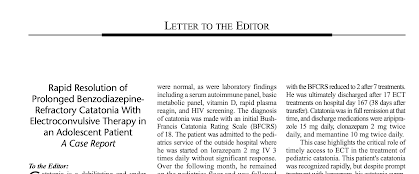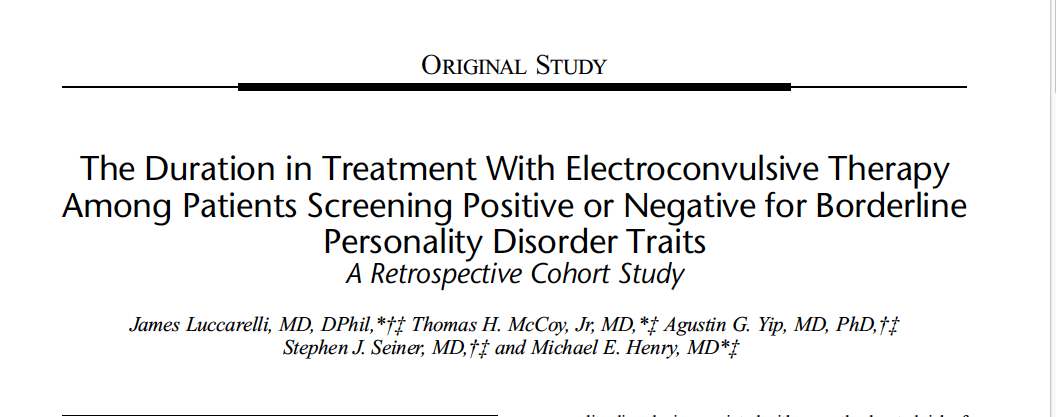Classics in ECT: Comparing ECT With Antidepressant Medications, American Journal of Psychiatry,1962

"Classics in ECT" brings you this study from the Green Journal in 1961: A comparative study of selected antidepressant medications and EST. GREENBLATT M , GROSSER GH, WECHSLER H. Am J Psychiatry. 1962 Aug;119:144-53. doi: 10.1176/ajp.119.2.144. PMID: 13901499 The pdf is here . And from the text: This study, by noted psychiatrist, Milton Greenblatt (1914-1994), is a fine classic read. In some ways it is the literary equivalent of easy-listening jazz: well written, easy to read, no surprises, satisfying results. Only the diagnostic categories used in the study are dated and a bit hard to translate to modern cohorts. It is from the time when antidepressant medications were new and amazing. "EST" became ECT and these early drugs have largely (but not totally) been superseded. (Please see also blog post of October 7, 2020 for some later work by Dr. Greenblatt.)











